
Sri Lanka Charming
10 Nights / 11 Days
A suggestive and charming itinerary: a unique opportunity to get to know the most significant places of Sri Lanka, staying in charming hotels.
A suggestive and charming itinerary: a unique opportunity to get to know the most significant places of Sri Lanka, staying in charming hotels.
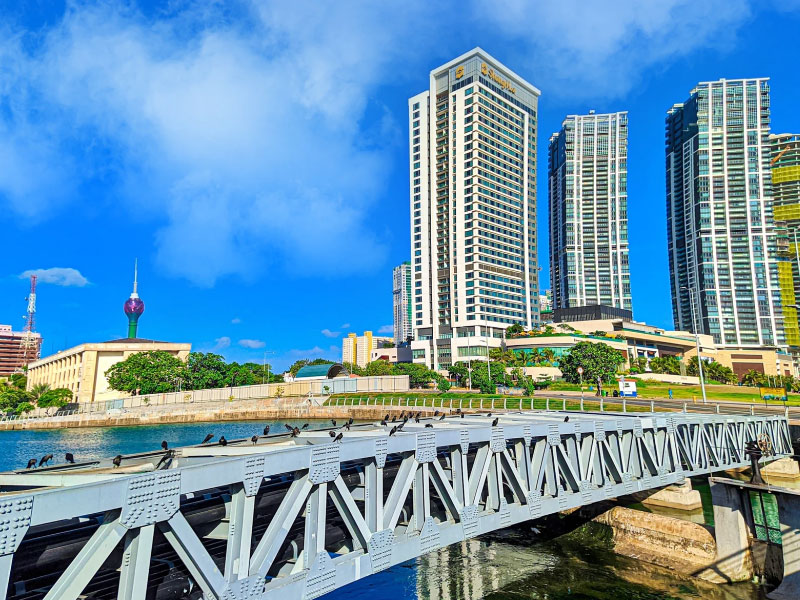
Colombo
Colombo - Sri Lanka’s Capital- a port city with a rich colonial heritage, religions and cultures offers a varying selection of experience ranging from taking a tuktuk ride, a visit to Pettah market and eating Kottu to playing a round of golf and having high tea at one of the colonial style hotels overlooking the Indian Ocean The city is a contrast itself,, fine dining options, shopping malls packed with expensive designer brands and street markets.
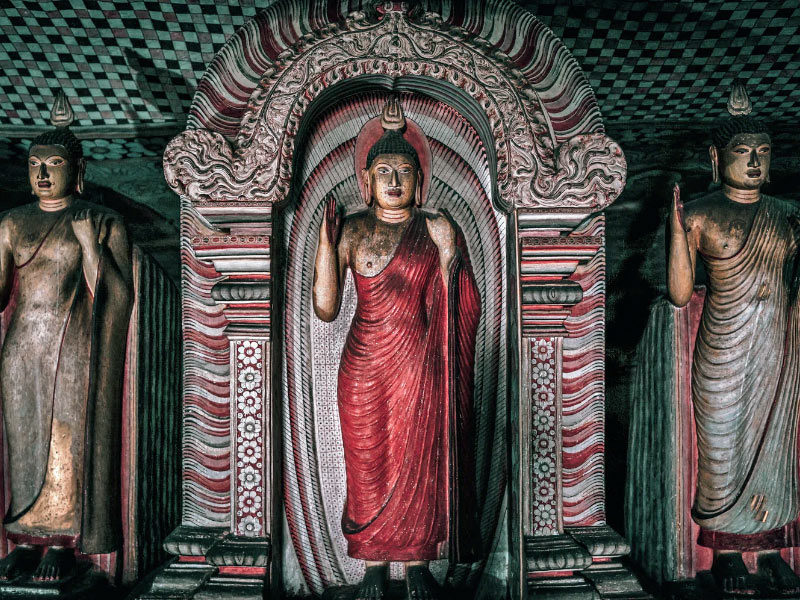
Dambulla
Dambulla - UNESCO World Heritage site, one of the largest and most outstanding Buddhist complexes in the Southern and South Eastern Asian region, showcasing innovative approaches to interior layout and decoration Temple is a living Buddhist site that is focused on a series of five cave shrines. Inhabited by forest-dwelling Buddhist monks since the 3rd century BC.
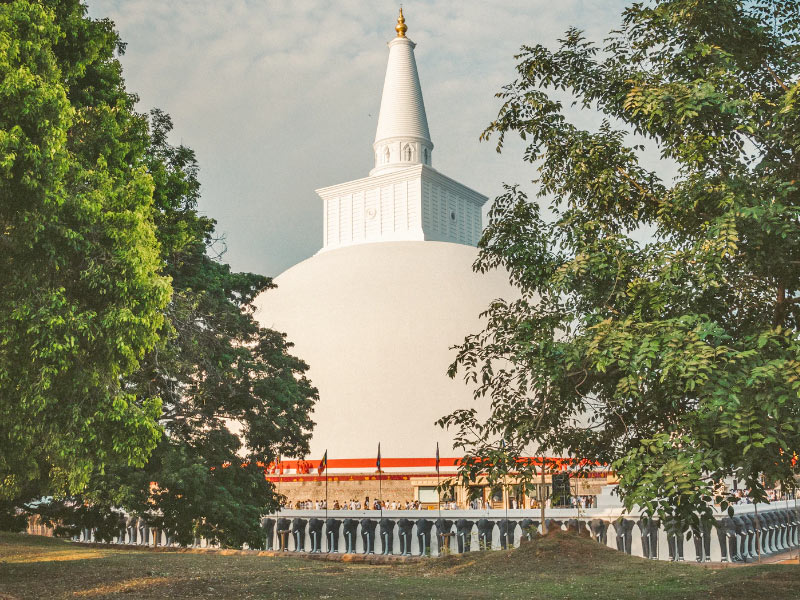
Anuradhapura
Anuradhapura - UNESCO world heritage one of South Asia’s most evocative sites- the sprawling complex contains a rich collection of archaeological and architectural wonders in the middle of the ruins, brick stupas, ancient pools and crumbling centuries old ancient temples.
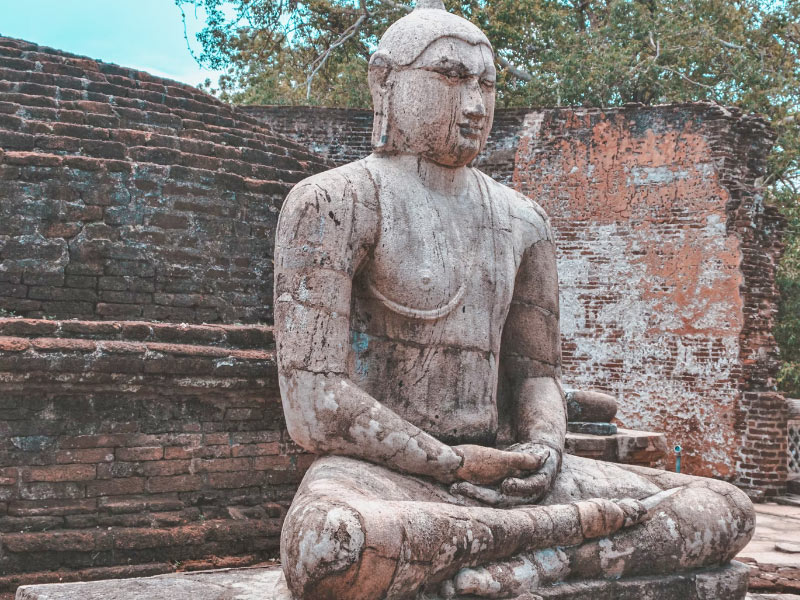
Polonnaruwa
Polonnaruwa - UNESCO world heritage site, ancient capital city full of archaeological treasures, temples, tombs, statues and stupas – in a compact core. Kings ruled the central plains of Sri Lanka from Polonnaruwa 800 years ago, when it was a thriving commercial and religious centre.
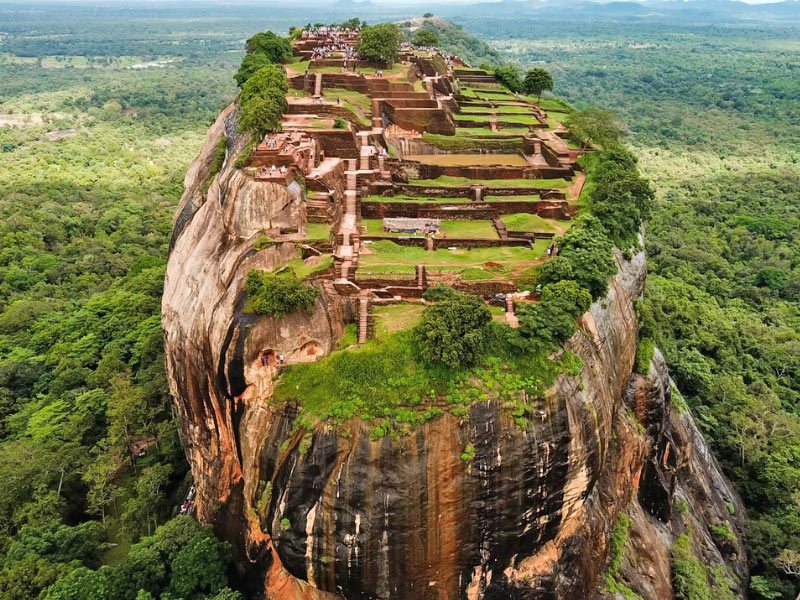
Sigiriya
Sigiriya - UNESCO world heritage site- famous for it's iconic palace ruins on top of a massive 200 meter high rock surrounded by the remains of an extensive network of gardens, remarkable frescoes and a pair of colossal lion's paws carved into the bedrock reservoirs and other structures.
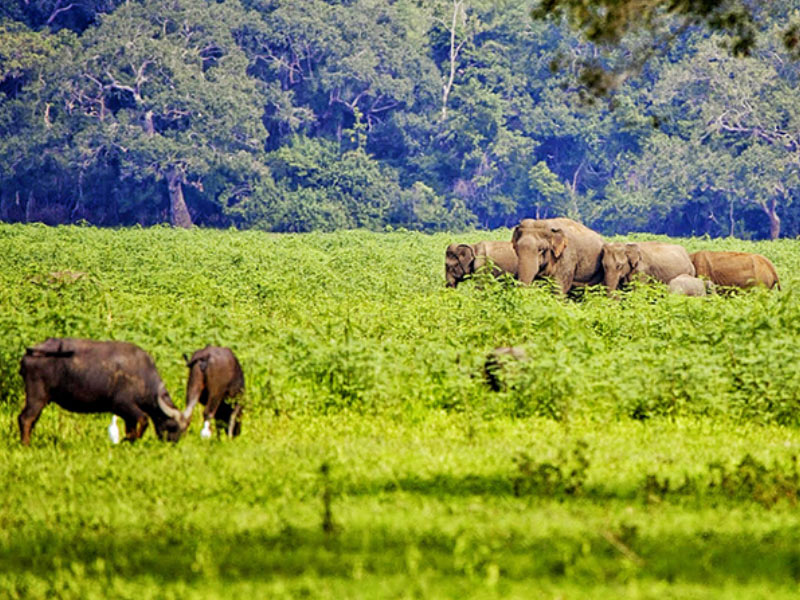
Matale
Matale- with the historical Buddhist site of Aluvihara, is a small city at the heart of the island which lies in a broad fertile valley, famous for kohila (a type of watercress) and small, mild chillies and spice plantations where vanilla, rubber, cinchona, jackfruit, cocoa and cardamom thrive.
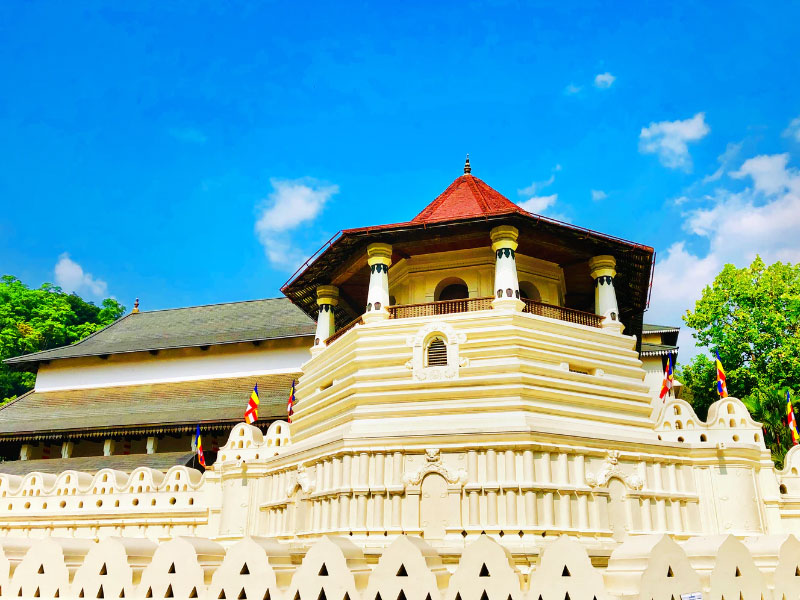
Kandy
Kandy - with its its vibrant cultural life, is a city of imposing colonial-era and Kandyan architecture, none more impressive than the Temple of the Sacred Tooth Relic, one of Buddhism's most sacred shrines and a UNESCO World Heritage Site. The city is renowned for the great Kandy Esala Perahera festival (held annually in July/August).
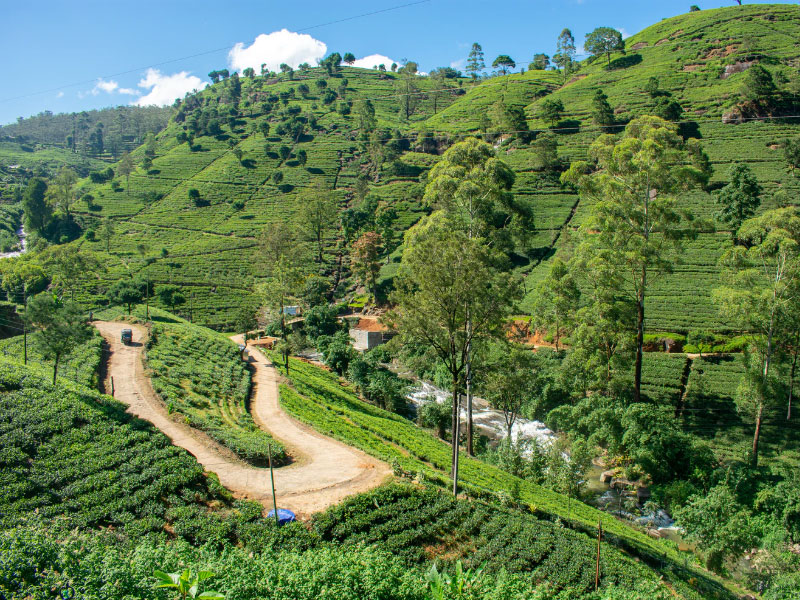
Nuwara Eliya
Nuwara Eliya - discovered by British personnel on their way to hunt elephants, Nuwara Eliya is one of the world’s largest tea producing regions and home to the country’s tallest mountain - Pidurutalagala. With its colonial-era bungalows, Tudor-style hotels, well-tended hedgerows and pretty gardens, bird watching spots, golf centres, Nuwara Eliya is one of the most fascinating places and offers a unique steam engine ride experience.
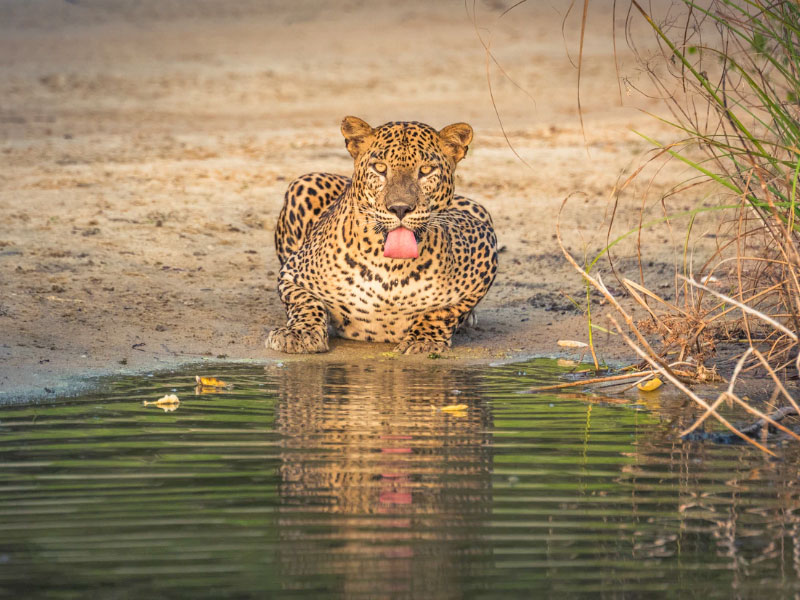
Yala
Yala is located in the south eastern region of Sri Lanka and extends over two provinces of Hambantota district of southern province and Monaragala district in Uva province. The entrance to the park is at Palatupana, 12km from Kirinda. The distance from Colombo to the entry point of Palatupana is 305 km. The gateway to Yala National Park is Tissamaharama. A 20 km drive via Kirinda takes the visitors to the Palatupana. At Palatupana, the well-designed visitor center provides the information to the tourists and assign a tracker to all incoming vehicles. The park provides jeeps with soft–tops which gives the opportunitiy to view wild life. Dawn and dusk bring about the best timing for safari tours in the Yala National Park.
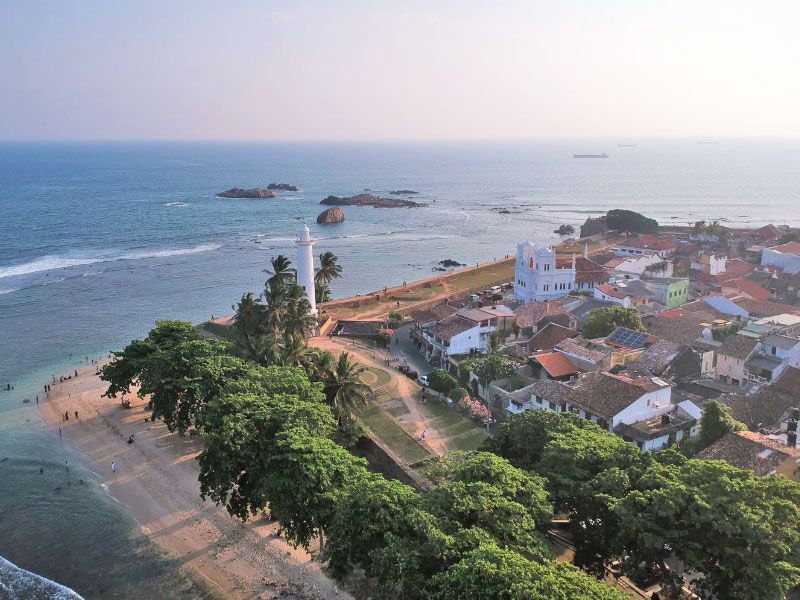
Galle
Galle is a jewel and an UNESCO World Heritage Site, this historic city is a delight to explore. An endlessly exotic old trading port blessed with imposing Dutch-colonial buildings, ancient mosques and churches, grand mansions and museums. Located approx 113 kilometers away from Colombo. The Galle Fort, also known as the Dutch Fort or the "Ramparts of Galle", is a historical, archaeological and architectural heritage monument, which even after more than 423 years maintains a polished appearance.
Spain / Colombo
Departure from Spain to Colombo with IATA scheduled flight: night flight, meals and overnight on board.
Colombo / Dambulla
Upon arrival in Colombo transfer to hotel in Dambulla. Rest of the day at leisure for relaxation. Dinner in hotel.
Dambulla / Anuradhapura / Mihintale / Aukana / Dambulla
Media pensión. Morning dedicated to the excursion to Anuradhapura, the first Sinhalese capital, from the 4th century BC. up to X a.d. In the afternoon visit of Mihintale, one of the sacred places for Sinhalese Buddhism because it is believed that from here it developed throughout the island (for the visit you have to climb a steep climb of almost 2000 steps!). Then visit the giant Buddha statue in Aukana.
Dambulla / Polonnaruwa / Minnerya / National Park / Dambulla
Media pensión. In the morning visit of Polonnaruwa (also declared a UNESCO World Heritage Site), the second ancient capital of the Sinhalese kingdom between the 11th and 13th centuries AD, whose temples and sculptures are among the best preserved in the country. In the afternoon jeep safari in Minneriya Park (or Kaudulla or Eco Park, depending on the period).
Dambulla / Sigiriya / Dambulla
Media pensión. In the morning, with a short catamaran ride on Lake Kandalama, you will reach a point where one or two elephants (belonging to a private “elephant compound”, open exclusively for Mistral customers) go to bathe in together with their ”mahouts”: it will be possible to participate in the exciting experience of bathing, playing with the elephants in the water and rewarding them at the end with delicious fruit! We will then return to the main road with another typical means of transport, the tractor, and from here by car we will continue to Sigiriya. Visit of the imposing fortress (declared a World Heritage Site by UNESCO), built on the rock in the 5th century. and more than 600 feet high (the climb will take about a couple of hours, because there are more than a thousand steps!). Afternoon at leisure to relax at the hotel.
Dambulla / Matale / Kandy
Media pensión. In the morning visit the beautiful temples excavated in the caves in Dambulla (they are located on the top of a hill with 400 steps, but you can get up to about half by car: from that point the climb takes about 20 minutes). Continuation then to Kandy: stop along the way and at a spice plantation in Matale.
Kandy / Peradenya Botanical Gardens / Kandy
Media pensión. In the morning visit the splendid Peradeniya Botanical Gardens, the Embekka Devale, a temple famous for its precious, finely carved wooden columns, and an ancient and aristocratic Dutch style house, now transformed into a real house museum where it will be possible to deepen the knowledge of the extraordinary Cingalese culture. In the afternoon, visit the holiest city of Sri Lanka, as well as the third capital of the Sinhalese kingdom: the Temple of the Sacred Tooth Relic (Dalada Maligawa), the lake, the market square.
Kandy / Nuwara Eliya
Media pensión. In the morning departure for Nuwara Eliya, a suggestive mountain station already known at the time of the British colony (1889 meters above sea level). Along the way, stop and visit a tea factory and some fascinating natural views.
Nuwara Eliya / Yala National Park
Media pensión. Morning at leisure to relax at the hotel, then transfer to Yala park and check-in at the hotel.
Yala / Galle National Park
Media pensión. At dawn jeep safari for the sighting of the numerous animals that inhabit the reserve (with a little luck it will also be possible to spot the famous Asian leopard!). After breakfast, transfer to Galle and check-in at the hotel. Time available for relaxation.
Galle / Colombo
Breakfast at the hotel. In the morning visit of Galle, a Portuguese, Dutch and finally English colony: time available to stroll in the ancient and fascinating Fort district. Then return to Colombo and check-in at the hotel. Free dinner.
Colombo / Spain
Breakfast at the hotel. In the morning transfer to the airport and departure for Spain with IATA scheduled flights. Arrival at destination in the evening and end of our services.
The Journey in brief
| Duration: | 10 - 12 Days / 8 - 10 Nights |
| Hotel: | Charming and Boutique Hotels |
| Type: | Group Fixed Departure / Individual Private Tour |
| Departures: | Every Saturday (01st April 2023 - 23rd September 2023) |
| Guides: | Tour Escort Spanish Speaking |
| Meals: | Half board |
| The itinerary can also be created on an individual private basis with departures on free dates | |
Highlight of The Tour
- Departures always guaranteed with a minimum of 2 participants
- The ideal choice for those who want to visit Sri Lanka by staying in the best facilities on the island
Currency adjustment blocked upon travel confirmation
Amaya Lake
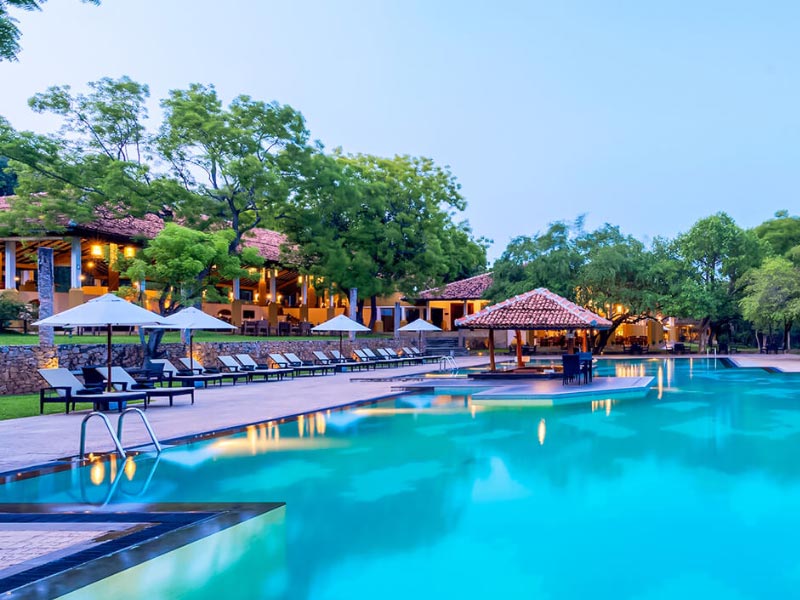
Kings Pavilion

Cinnamon Citadel
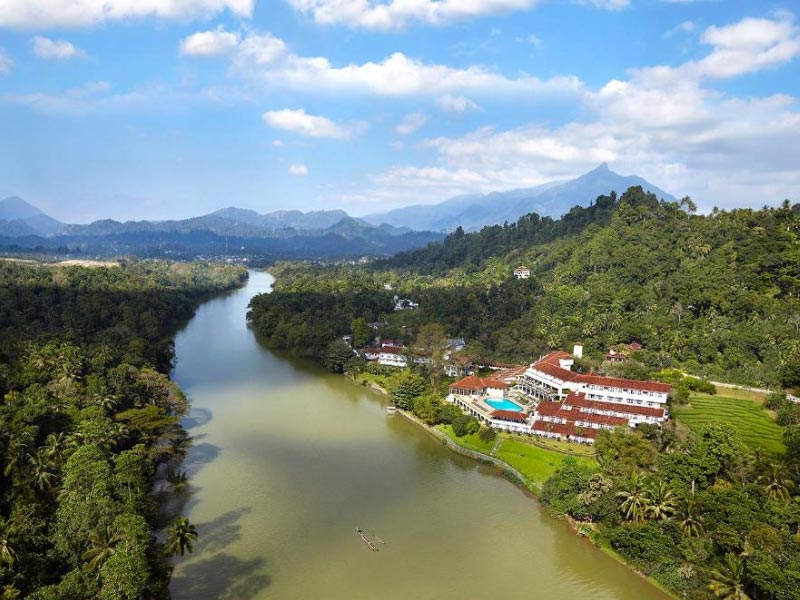
Cinnamon Citadel
Kandy is renowned to be one of the most scenic cities in Sri Lanka. Surrounded by sweeping green hills, misty mornings bordered by the longest river in the country, Cinnamon Citadel Kandy is your ideal retreat for a truly relaxed and carefree getaway. Steeped in cultural and historical significance, this resort is designed in a manner to reflect this rich history and majesty with the use of ‘heritage’ red representing royalty and white spaces symbolizing a modern, chic and sophisticated ambience.
Cinnamon Citadel
Kandy is renowned to be one of the most scenic cities in Sri Lanka. Surrounded by sweeping green hills, misty mornings bordered by the longest river in the country, Cinnamon Citadel Kandy is your ideal retreat for a truly relaxed and carefree getaway. Steeped in cultural and historical significance, this resort is designed in a manner to reflect this rich history and majesty with the use of ‘heritage’ red representing royalty and white spaces symbolizing a modern, chic and sophisticated ambience.

Oliphant Boutique Villa by Amaya

Elephant Reach Hotel
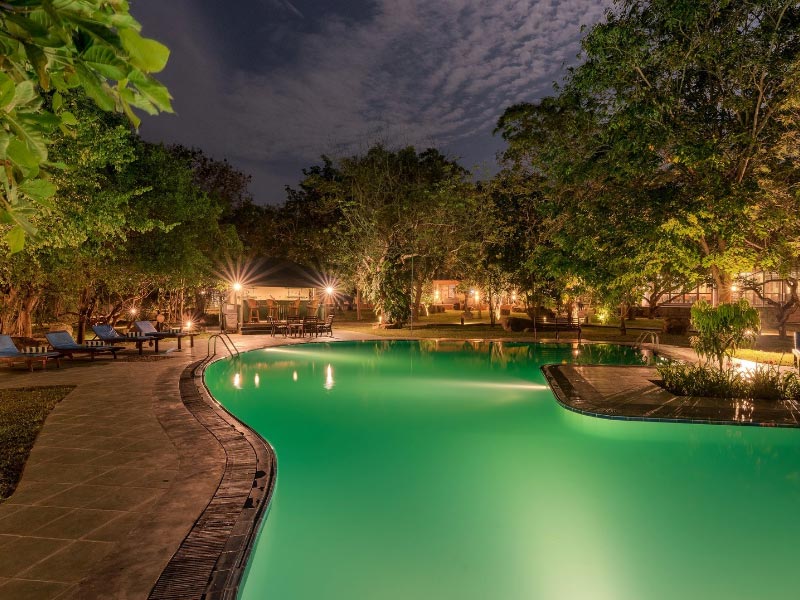
Elephant Reach Hotel
Elephant Reach, located bordering the Ruhuna Yala National Park, invites travelers to enjoy the bountiful nature in its natural surrounding whilst experiencing authentic Sri Lankan hospitality combined with luxury. Thus the experience of a stay at Elephant Reach will be cherished by all who step inside this nature haven.
Jetwing Lighthouse
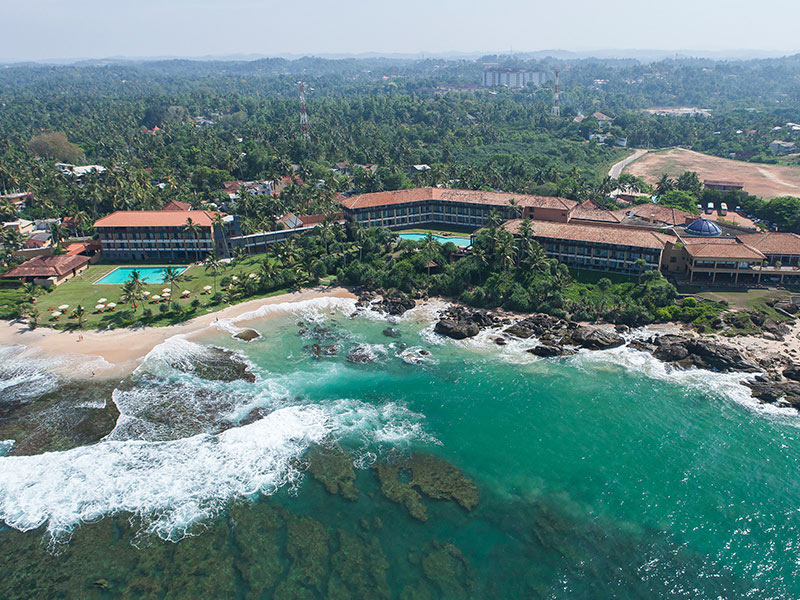
Jetwing Lighthouse
One of the most iconic Galle hotels, Jetwing Lighthouse is located on its immediate outskirts upon a hillock overlooking the vast Indian Ocean beyond our heritage city. The coastal trunk road runs just outside our home of Sri Lankan hospitality, offering easy access from other destinations, including Colombo via the Southern Expressway.
The Kingsbury Colombo

Sri Lanka
Sri Lanka has a recorded history that spans back 3000 years. Like its massive neighbour India, Sri Lanka is a diverse country, home to many religions, ethnicities and languages. It is also still blessed with a variety of wildlife that has survived alongside this human civilisation, on this small island for centuries. Today it offers tourists a diverse experience - from the modern city of Colombo with its skyscrapers to national parks teeming with elephants and religious and cultural buildings of multiple origins.
BANKING AND CURRENCY
Currency
Sri Lanka Rupee (LKR; symbol Rp) = 100 cents. Notes are in denominations of Rp2,000, 1,000, 500, 200, 100, 50, 20 and 10. Coins are in denominations of Rp10, 5, 2 and 1, and 50, 25, 10, 5, 2 and 1 cents. There are also large numbers of commemorative coins in circulation.
The import and export of local currency is limited to Rp5000. The import of notes from India and Pakistan is not allowed. Otherwise, the import of foreign currency is not restricted but all amounts over US$10,000 are subject to declaration at customs. Export of foreign currency is limited to the amount declared on import.
Foreign currency can be changed at authorised exchanges, banks and hotels.
Banking
Banking hours: Mon-Sat 0900-1300. Some city banks close at 1500, some even have night-time banking facilities.
MasterCard and Visa are widely accepted. American Express is also often accepted. The tourist board urges caution when paying by credit card due to the potential for fraud.
Major cities have ATMs, although not all will accept international cards, especially the national bank. It is advisable to try to have some cash at hand whilst travelling, particularly in rural areas.
Traveller's cheques are often not accepted. If you find somewhere that will exchange them, the rate of exchange for traveller's cheques can be better than the rate of exchange for cash but there are handling fees to consider and banks are more likely to give a favourable rate than hotels. To avoid additional exchange rate charges, travellers are advised to take traveller's cheques in US Dollars or Pounds Sterling.
TRAVEL, TRANSPORT AND GETTING AROUND
Domestic air services around Sri Lanka are limited, and most tourists travel by either road or train. If you do choose to fly, then the major domestic airport is Ratmalana at Colombo. There are reasonably regular flights to Jaffna, Palaly and Trincomalee by FitsAir (www.fitsair.com). Charter flights can be arranged by them, or by helicopter with Millennium Airlines.
With the opening of Mattala Rajapaska International Airport, domestic services are expected to begin operating between the east and south coasts in the near future.
Sri Lanka has a widespread road network, which accounts for nearly 95% of land transport across the country. Driving tends to be erratic, and most travellers either employ a locally knowledgeable driver or use public transport.
The quality of the country’s road varies considerably. The main coastal arteries are modern and well-maintained, while many of the mountain roads are poor-quality and pockmarked with holes. Road works are everywhere, demonstrating the island’s increasing prosperity and its commitment to infrastructure development.
E class roads are high-speed expressways, while A class roads represent the national highway network. B class and C class roads tend to be smaller and of varying quality.
Car hire services are available from several international agencies. To hire a car, visitors must have a valid driving licence and be 18 or over. In order to avoid bureaucratic formalities in Sri Lanka, an International Driving Permit should be obtained before departure. If not, a temporary licence to drive is obtainable on presentation of a valid national driving licence. Air-conditioned minibuses are also available. Motorised rickshaws are also readily available for hire in towns and villages. Chauffeur-driven cars are not too expensive and are recommended.
Taxis in Sri Lanka have yellow tops and red and white plates. In Colombo, taxis are metered but it is advisable to agree a rate before setting off. Drivers expect a 10% tip. A cheaper and more authentic option is to flag down a tuk-tuk - these open rickshaws are available for hire in abundance across the country.
Cycling in the cities is inadvisable, but in rural areas bikes are becoming increasingly common. There are four National Cycle Trails. Most bike hire agencies are concentrated in Colombo and Negombo.
The cheapest and most enjoyable way to get around Sri Lanka is by bus. Most vehicles are ancient, atmospheric and packed with chattering locals, and major routes include Colombo to Kandy, Colombo to Matara and Colombo to Jaffna. Timetables can be found on the website of the National Transport Commission (www.ntc.gov.lk).
The Central Transport Board provides intensive urban bus operations in Colombo, where there are also private buses and minibuses. Fares are generally collected by conductors. Services are often crowded.
Trains connect Colombo with all tourist towns, but first-class carriages, air conditioning and dining cars are available on only a few. Passengers can buy tickets online from Sri Lanka Railways (www.railway.gov.lk). New fast services operate on the principal routes, including an intercity express service between Colombo and Kandy, otherwise journeys are fairly leisurely.First-class carriages almost always book up in advance, so it’s best to secure your ticket early.
There is no official river transport network, but several tourism operators offer river cruises on the Bentota and Polwatta rivers.
FOOD, DRINK AND CUISINE ADVICE
All water should be regarded as being potentially contaminated. Water used for drinking, brushing teeth or making ice should have first been boiled or otherwise sterilised, whilst bottled water and a variety of mineral waters are available at most hotels. Unpasteurised milk should be boiled, and if possible powdered or tinned milk is advised; these are generally available in Sri Lanka. Pasteurised and sterilised milk is available in some hotels and shops. Avoid dairy products made using unboiled milk. Beware of eating salads - vegetables should be cooked and fruit peeled, and all should be washed in sterilised water. Street food in Sri Lanka is ubiquitous but use your judgement wisely and only eat well-cooked meat and fish, that have not been left sitting out.
Whether it’s a curry spread served in a private house or a succulent fish dish dressed to perfection in a restaurant, Sri Lankan cuisine is a true treat for the taste buds. Rice, spices and fruit are at the centre of most meals - expect a typical non-Westernised menu to feature staples such as mango lassi, Ceylon tea, curries and ‘roti’ flatbread. Prices are incredibly low outside the tourist hotspots, and it’s quite possible to eat like a king for less than £5 per day.
While Sri Lankan cookery is increasingly famous for its fine flavour combinations, most visitors will draw the line at being served curry at breakfast. Bigger hotels generally offer British-style spreads, but at smaller guesthouses you may need to ask for something a little milder. Expect a greater diversity of cuisine in large towns and cities such as Colombo and Negombo, where Chinese, Continental, Indian and Japanese menus are common.
In most Sri Lankan towns, you’ll find pavement stalls and corner shops selling street food specialities. No trip to the country is complete without a scrumptious snack bought from a street vendor but avoid unpeeled fruit and salads, which can trigger violent reactions in the uninitiated.
Alcohol cannot be sold on poya holidays (which occur each lunar month on the day of the full moon).
Most hotels include a 10% service charge. Extra tipping is optional.
CLIMATE AND WEATHER
Sri Lanka climate is tropical and consists of distinct wet and dry seasons. The Yala monsoon brings abundant rainfall to the country’s western and southern regions from May to September; the area experiences its dry season during December through March. Altogether, the southwest receives around 4000mm of rainfall each year. The Maha monsoon affects northern and eastern Sri Lanka weather and often lasts from October to January, with the dry season usually lasting from May to September. This region receives approximately 1000mm of precipitation annually, significantly less than the other half of the country. There is also an inter-monsoonal period in October and November during which rain and thunderstorms occur frequently across the island.
Generally speaking, upland areas of Sri Lanka are cooler and more temperate, with a yearly average around 16-20ºC (60-68ºF), and coastal areas are warmer with average temperatures around 27ºC (80ºF). The March-June season experiences slightly higher temperatures (up to 33ºC / 92ºF), while the temperatures in November-January are a few degrees lower (around 24ºC / 75ºF at the coast). Sri Lanka weather along the shores is made more comfortable by cooling sea breezes. The surrounding sea remains rather constant at roughly 27ºC (80ºF) year-round. Humidity is typically rather high in Sri Lanka, averaging out at around 80% year-round.
As the nation is located in the tropics, Sri Lanka weather can be severely affected by an El Niño. Though this irregular climate change only occurs around every three to seven years, the area’s weather can be altered for an extended time in effect. In the presence of a strong El Niño, expect a chance of drought conditions during the March-August months and possible flooding September-November. Floods regularly hit Sri Lanka, particularly in the southwestern region, so it may be wise to avoid the area during the wet season.
Sri Lanka climate can be at its most enjoyable in the drier seasons; the best time to travel to the west, south and upland areas of the island is during December to March, while the recommended travel season for the east coast region is April to September.
The most popular season for tourism is between December and March, when the country attracts Europeans fleeing the Northern Hemisphere’s winter weather. Christmas and the New Year are particularly popular for a Sri Lankan holiday, while July and August represent festival season on the island – if travelling during either time it is recommended to book well in advance to guarantee accommodation.
The island is certainly a year-round destination as there is usually one region of the country experiencing good weather, while others are hit by poorer conditions. The diverse topography of Sri Lanka allows for balmy beach holidays on the east coast from April to November, while the west is ideal for hitting the beach from December to March. However, be aware that Sri Lanka weather can be unpredictable during any season.
CLOTHING AND DRESS RECOMMENDATIONS
The weather in Sri Lanka can be unpredictable during any season so depending on where in the country you’re going, it’s best to take layers. The central highlands can be significantly cooler throughout the year, so you’ll need warmer clothes here. Lightweight rainwear is also recommended any time of year.
ELECTRICITY AND PLUG STANDARDS
For the most part, electrical sockets (outlets) in Sri Lanka are one of two types: the "Type D" Indian 5 amp BS-546 or the European CEE 7/16 Europlug. The Indian socket is actually an old British standard. The "Type D" Indian plug and socket is not to be confused with the "Type M" South African plug and socket. In pictures, they look very similar, but the South African type is much larger than the Indian type, and they are physically incompatible. If your appliance's plug doesn't match the shape of these sockets, you will need a travel plug adapter in order to plug in. Travel plug adapters simply change the shape of your appliance's plug to match whatever type of socket you need to plug into. If it's crucial to be able to plug in no matter what, bring an adapter for both types.
Electrical sockets (outlets) in Sri Lanka usually supply electricity at between 220 and 240 volts AC. If you're plugging in an appliance that was built for 220-240 volt electrical input, or an appliance that is compatible with multiple voltages, then an adapter is all you need.
But travel plug adapters do not change the voltage, so the electricity coming through the adapter will still be the same 220-240 volts the socket is supplying. North American sockets supply electricity at between 110 and 120 volts, far lower than in most of the rest of the world. Consequently, North American appliances are generally built for 110-120 volts.